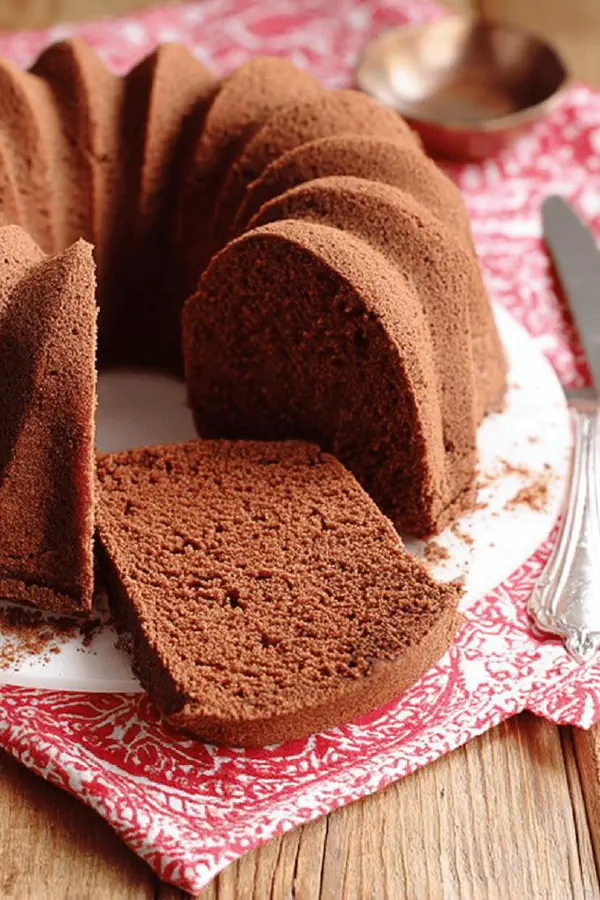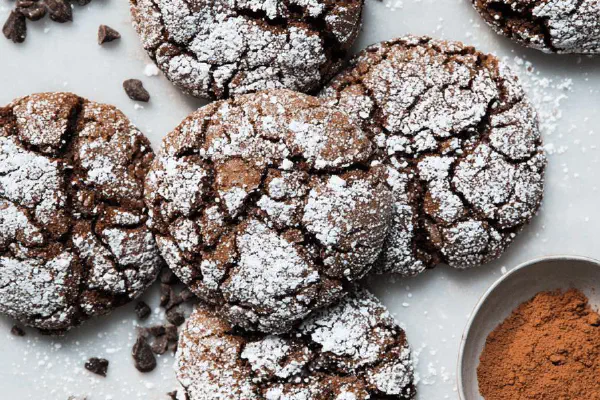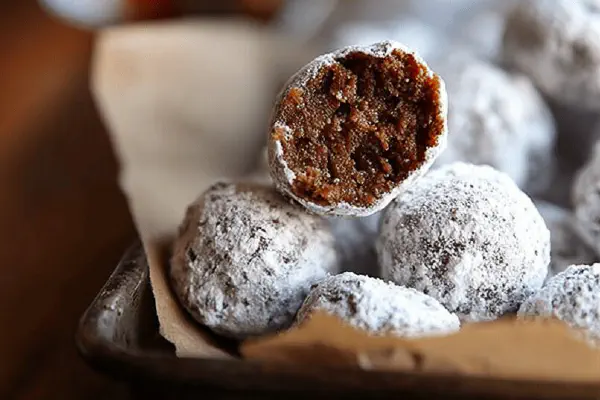Featured Recipe
Chocolate Pound Cake Twist

By Kate
"
Dense chocolate cake with adjusted butter and sugar. Adds sour cream for moisture and espresso powder to punch up chocolate flavor. Uses canola oil instead of shortening for cleaner texture. Alternates flour mixture with buttermilk to balance acidity. Bundt pan preferred for even baking. Watch for golden crust and spring-back when touched. Toothpick test crucial but visual cues more reliable. Cooling in pan just enough to release without breaking. Rich aroma fills kitchen. Prep and cooking times shifted slightly for best crumb and moist center.
"
Prep:
20 min
Cook:
Total:
Serves:
12 servings
chocolate
pound cake
baking
Introduction
Chocolate cake that doesn’t dry out or crumble like fragile stuff. Turns out shortening hides flavor and leaves weird texture; swapped in canola oil for cleaner bite and moist crumb. Sour cream addition makes dense pound cake more tender, stops drying while baking long at modest heat. Espresso powder? Not to flavor coffee but to blast cocoa flavor so it’s deeper, almost velvety. Sifting dry stuff avoids lumps and ensures even rise. Watch batter closely—thick but not gluey or runny. Oven temp consistent or cake fails to lift and bake through. Bundt pan thick shape demands patience. Hands-on feel more than strict minutes. Cooling window is trick—too soon, cake breaks, too late sticky to remove. It’s about patience and touch, learning when cake’s ready visually, by smell, touch, and sound—the faint crackle of crust forming. Don’t rush this. The reward is weighty slice with fine crumb and moist center that bares no soggy middle or tough edges.
Ingredients
About the ingredients
Butter needs to be softened, not melted, for proper creaming. Canola oil replaces shortening to lighten crumb without sacrificing moisture—avoid heavy binding from hard fats. Sifting cocoa prevents clumps that turn into pockets of dry powder. Use espresso powder cautiously; no bitterness, just boost. Buttermilk and sour cream supply acidity helping tenderize gluten while reacting with baking soda for lift. Eggs at room temp prevent batter from seizing or curdling. Vanilla at the end avoids evaporation during mixing. Flour amount cut slightly to adjust for sour cream moisture. Greasing bundt pan with butter plus flour or cornmeal crucial to prevent sticking—the design traps air, so thorough coating matters. If no bundt, tube pan works but baking time may vary. Baking soda and powder balance acidic and neutral components for perfect rise without metallic tang.
Method
Technique Tips
Start with oven preheated and pans prepared fully. Cream fats first—the fluffy texture traps air, ensures rise. Add eggs slow to keep batter integrated and smooth. Dry and wet ingredients layered to minimize gluten formation, which toughens pound cake. Mixing gently after adding dry avoids dense cake. Visual and tactile cues over timers: edges darken and pull back; center spring back means bounce back when gently pressed. Toothpick not always reliable near edges—near center is best spot. Cooling balances cake’s internal structure before unmolding. Too hot and cake sticks or tears; too long cool makes sticky break out. Run a thin knife carefully for release. Resting after cooking sets crumb and flavor; patience here is key to slice well. Store wrapped airtight to maintain moisture or freeze wrapped in plastic then foil to avoid freezer burn.
Chef's Notes
- 💡 Watch oven temp; accuracy matters. Too low may cause collapsing, too high can dry it out. Bundt demands patience. Moisture from fat balanced, but overmix kills crumb. Cool in pan just right.
- 💡 Creaming butter, sugar, oil well—air traps matter. Eggs added slowly keeps consistency. Ingredients sifted? Yes, prevents lumps. Visual cues vital—dark edges pulling back from sides signals readiness.
- 💡 Buttermilk alternative? Yogurt works. Crème fraîche too. Adjust sour cream if missing. Sifting cocoa prevents powdery clumps ruining batter. Greasing bundt pans thoroughly—prevent disasters. Cornmeal aids release if flour's not available.
- 💡 Use good quality cocoa; it changes flavor profile. Check if overmixing occurred if cake's tough. Ensuring room temp eggs helps emulsification; cold eggs create lumps. Measure flour correctly—too much leads to dryness.
- 💡 Resting cake after it's out aids crumb structure. If cooling too long, sticky to handle. Too soon? It breaks. Use thin knife around edges if it sticks. Know timing, feel, aroma.
Kitchen Wisdom
What if cake falls?
Check oven calibration, may bake unevenly. But also see if underbaked or too much flour involved. Sometimes just a matter of mix.
Alternatives for buttermilk?
Sour cream, yogurt can substitute but need more than just liquid—texture altered. Not every dairy swap equals success. Keep that in mind.
Dry cake issue?
Overmixing is suspect first. Examine flour measurement next, more isn't better here. Consider cocoa quality too; that impacts overall cake experience.
How to store leftovers?
Wrap tightly in plastic; keep air out. Freezing? Wrap once in plastic, then foil. Avoid freezer burn risks. Think about moisture retention.



